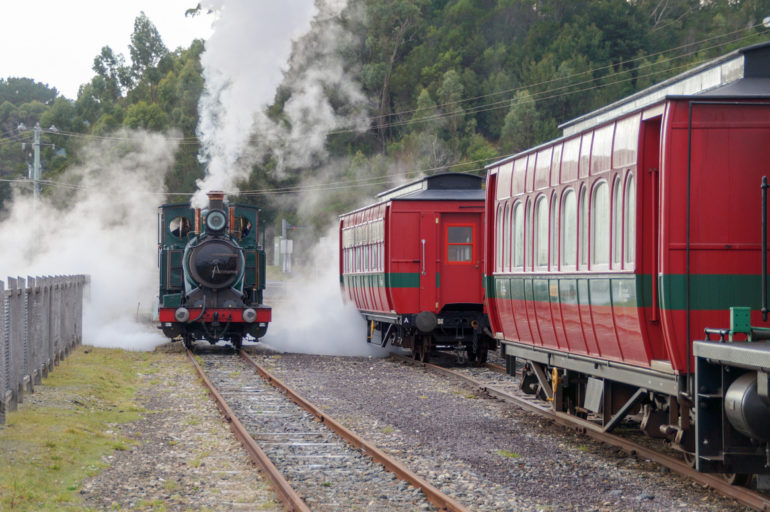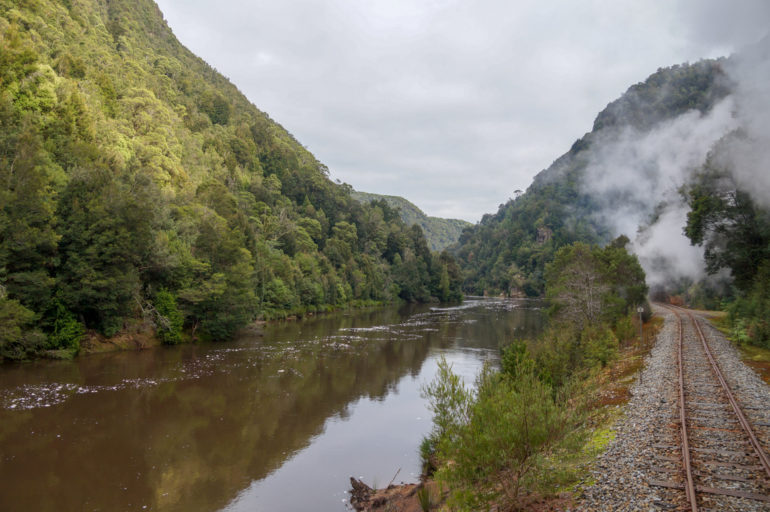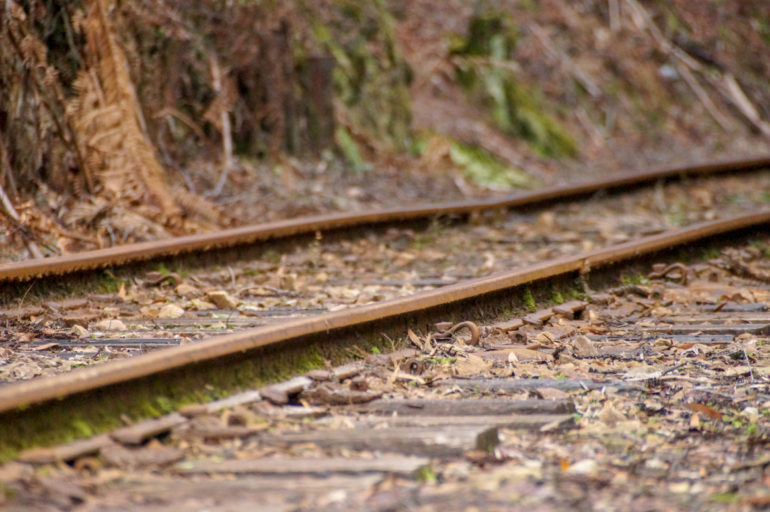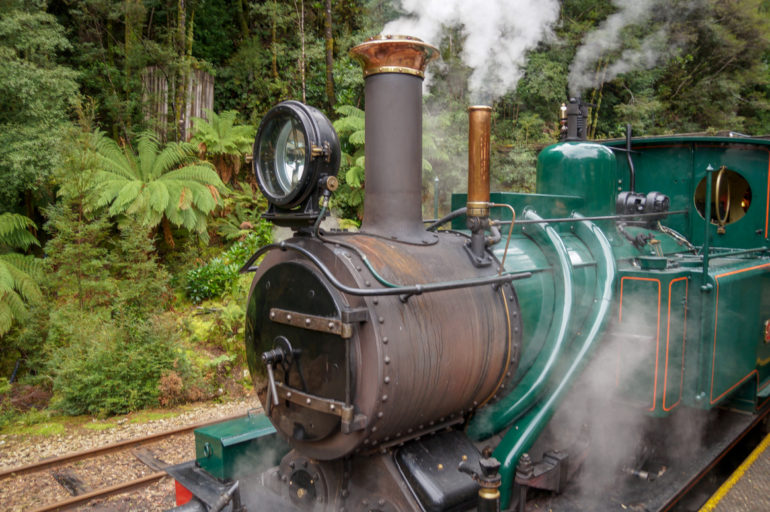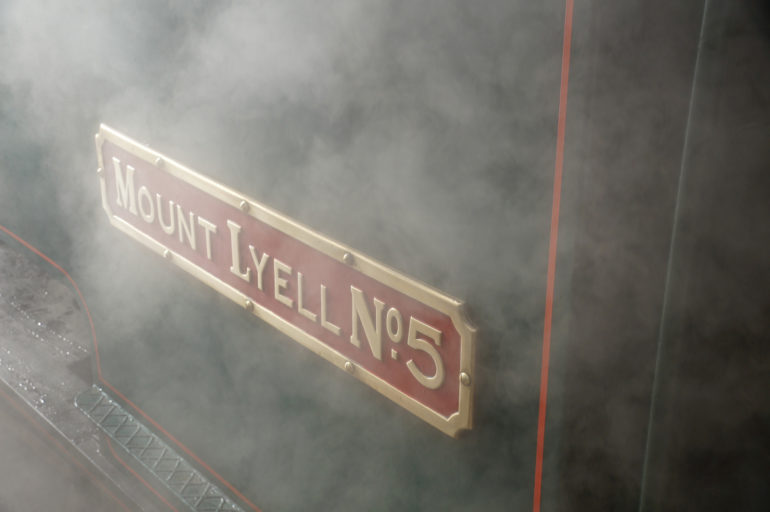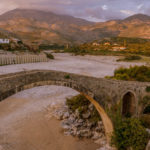His arms told the story. Both were covered with scars; the price of long days in front of the boiler. His cap was also worse for wear – tattered around the edges and painted with soot.
It doesn’t look like an easy job, but someone has to keep the fire burning.
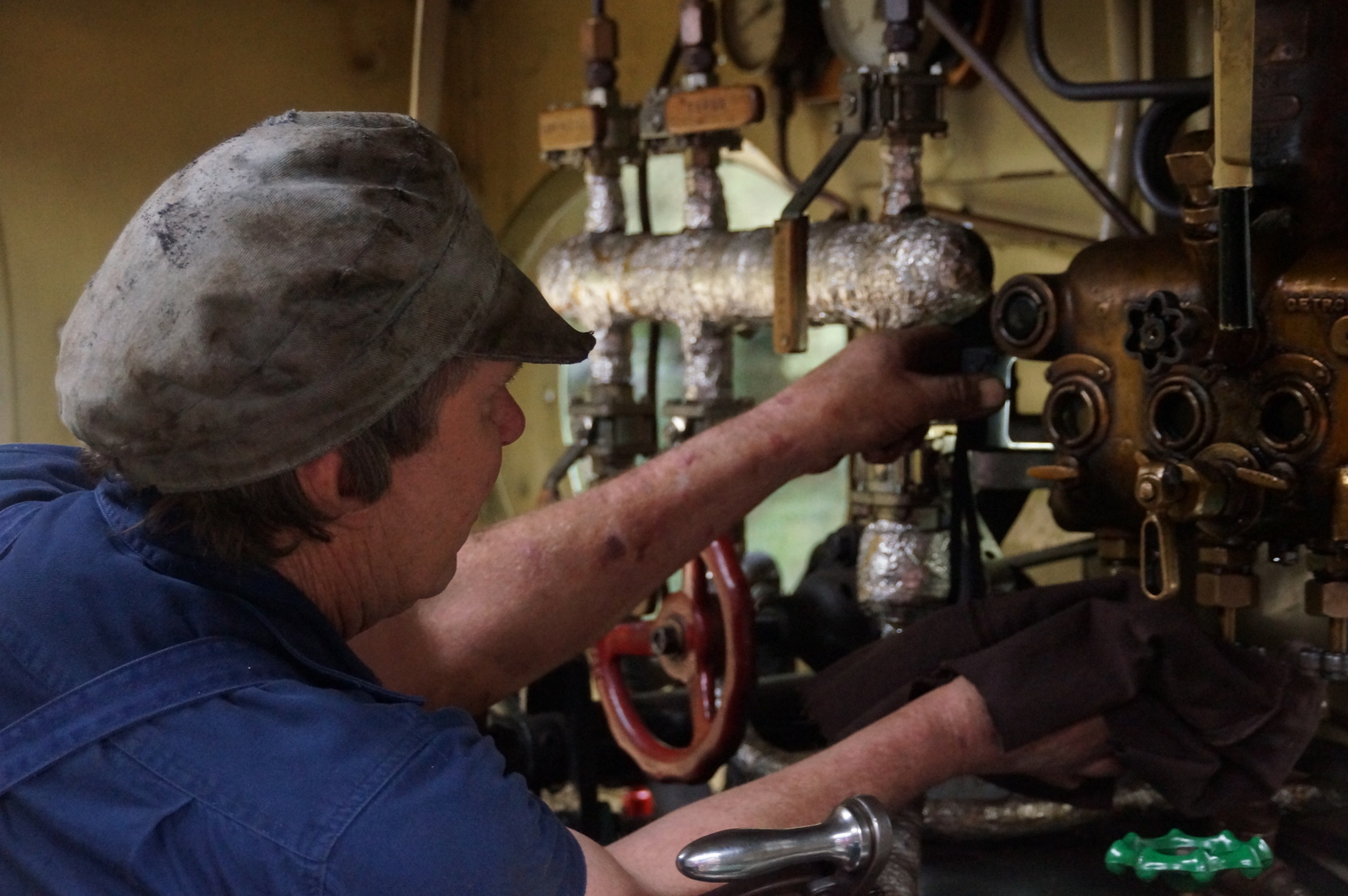
On a grey day like today, typical for Tasmania’s West Coast, the toasty heat in the loco would be welcome, making the fireman’s job that little more pleasant. But Pete doesn’t look the sort to be bothered by a bit of miserable weather anyway.
“You’ve got to have a passion for it,” he replies when I ask him about his career.
Pete’s got about 3000 fireman hours under his belt, having been involved in volunteer railways on the mainland since 1968. He moved to Tasmania for the job on the West Coast Wilderness Railway and now spends his days travelling along a track built more than a century ago.
We board the train at the Regatta Point station and take our seats in the Wilderness Carriage, one of only two carriages hooked up to the engine for this low-season trip. Tom, the chief steward, brings us a glass of bubbly as we get comfortable. Our River and Rainforest trip will take us from Strahan to Dubbil Barril, the halfway mark on the railway that stretches through to Queenstown.
As the train pulls out of Strahan, and the views of Macquarie Harbour are replaced with the King River and thick vegetation, Tom starts his story.
“Why is there a railway here anyway?”
Copper was discovered near Queenstown in the late 1800s. “Cricket ball size nuggets,’’ Tom tells us.
The copper was 50 kilometres inland and there were no roads from the mine at Queenstown. Mountains and perilous terrain stood between the jackpot and its ticket to market – the port at Macquarie Harbour.
The railway was the solution.
The West Coast region was booming – the mining operations and railway construction attracted workers in droves. But the mammoth task ahead was tough.
The railway workers cut out the rock to carve a path through the mountains. It was hard going and the pioneers made the passage no wider than needed – on some parts of the track you can lean out and graze your fingertips along the rock face.
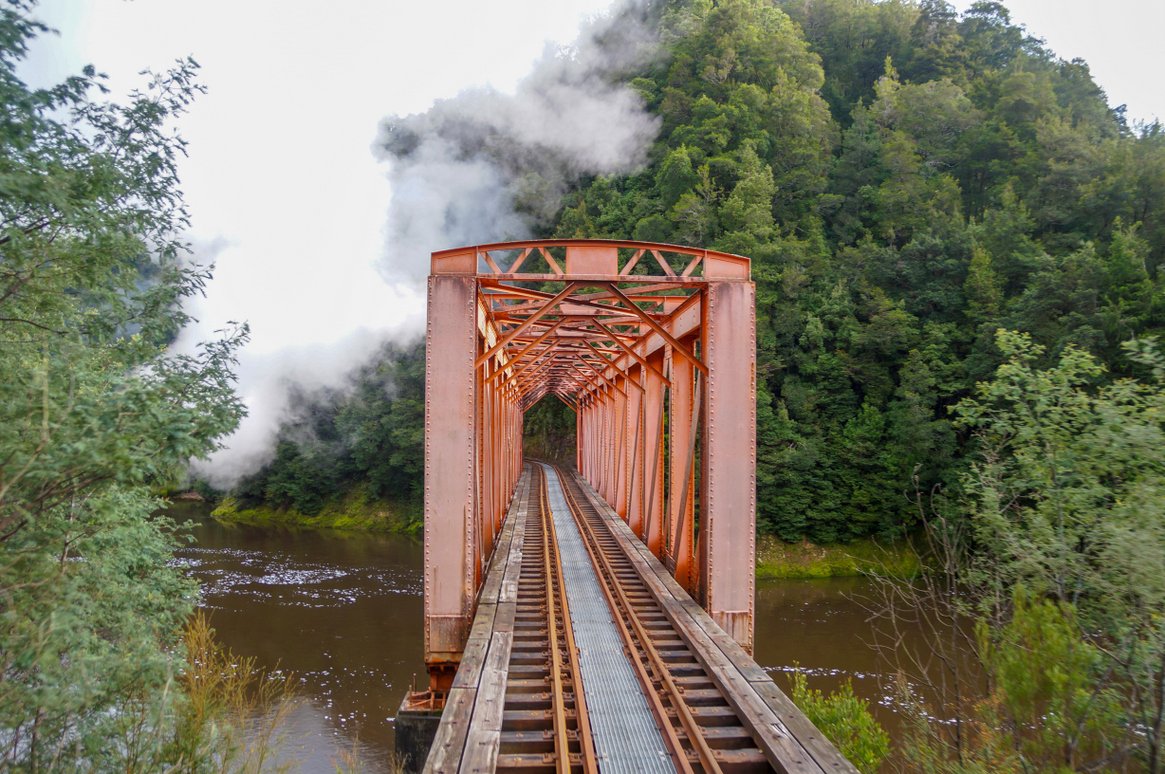
The wilderness was dense and wet. Workers, living in canvas tents in the wettest region of Tasmania, cut holes in their boots to let the water drain out. The same holes let the leeches in.
Construction also presented technical challenges. Bridges were floated down the river, pulled apart and rebuilt on site. The engines were sent over in parts and assembled in the camps, often by men who had no idea how to build a train.
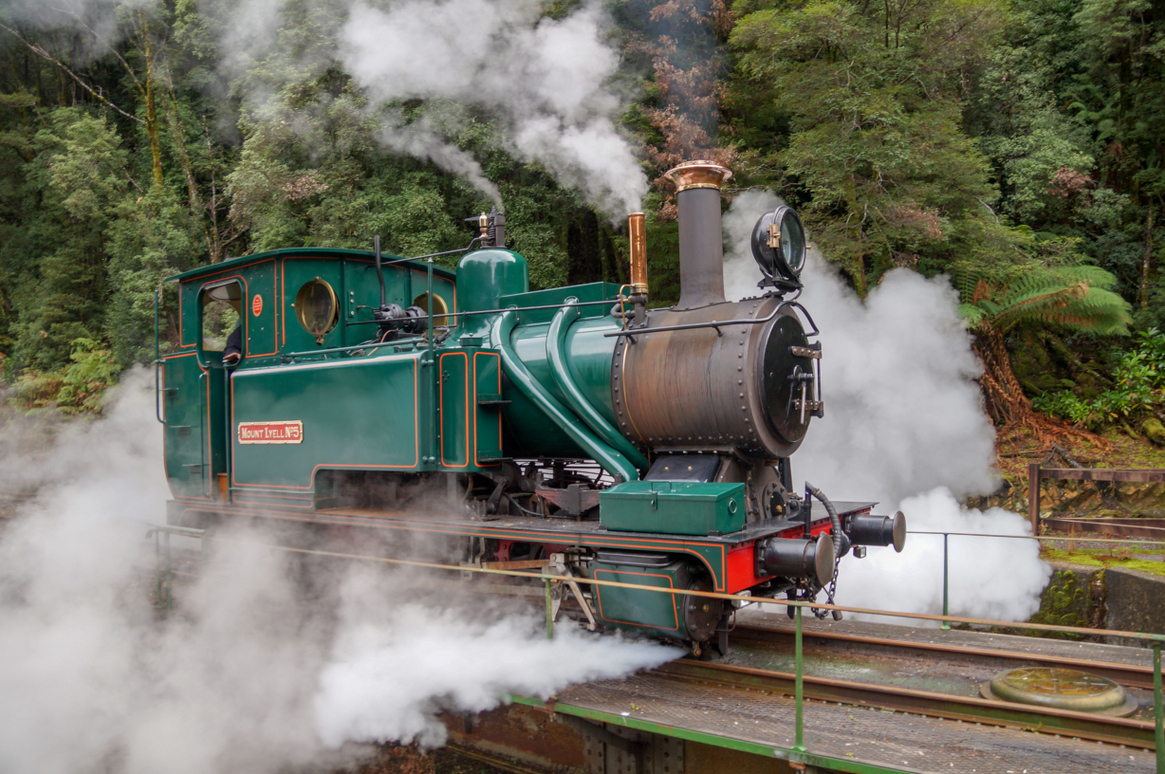
“Although Camp Spur wasn’t much then, or now, it was the birthplace of our locomotives,” Tom says as we travel past a clearing; the site of one of the work camps.
The engine pulling us today, Mount Lyell No.5, was made in Glasgow in 1938 and shipped out already assembled to Tasmania. It was the only loco to break down on its first run.
Rising maintenance costs and road development led to the closure of the railway in 1963. It was transformed into a tourist attraction in 2002, closed again in 2013 and reopened last year.
The tourist experience is first class (pun intended). I admire the rainforest from the comfort of the Tasmanian blackwood carriage, which was beautifully restored by Pete – clearly a man of many talents. Tom serves us smoked salmon canapés, sandwiches and later scones with jam and cream. It’s a luxurious way to explore such unique, yet unforgiving wilderness.
Occasionally I put on my coat and stand at the back of the carriage, watching the steam disappear into the tree tops. Pete tells me fallen trees are the main hazard along the track – it doesn’t snow that often down this low.
“Guys come through in the truck in the morning and do a run through,’’ Pete says, adding that sometimes the trees fall after the track is given the all clear. “(So) we carry a chainsaw in the loco.’’
Dubbil Barril marks the halfway point of the railway and our journey. If we were to keep going we’d venture onto the Abt rack and pinion system. The start of the grooved rail, running down the centre of the tracks, can be seen at Dubbil Barril. The trains are fitted with a toothed cog that climbs along the rail and carries the train over the steepest part of the route. The Abt system is also used on the railway up Mount Snowdon, the highest peak in Wales. 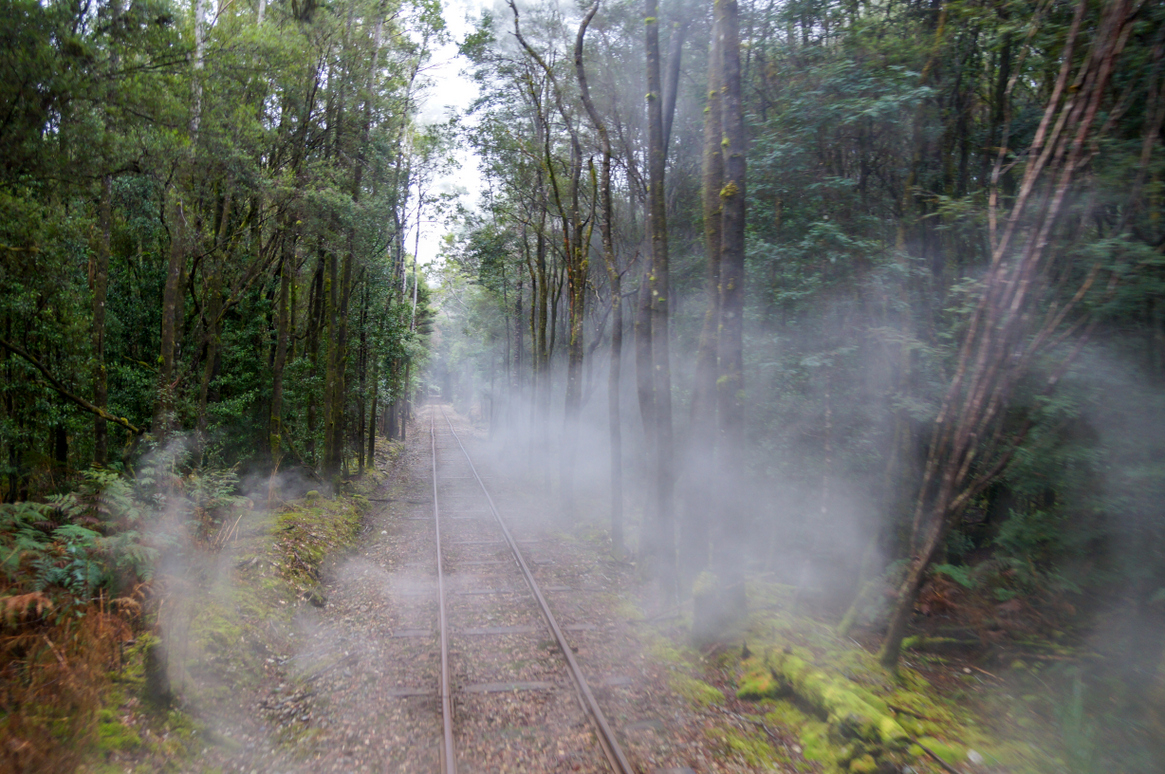
In the summer the railway runs full-day trips between Strahan and Queenstown. There are also packages that allow visitors to catch the railway halfway and take a raft down the river the rest of the way. However, through the winter, when the tourist numbers down this way drop significantly, Dubbil Barril is as far as we go.
The engine is removed and driven down to the turnstile at the end of the station. Pete stands on one side, the driver on the other, as they push the loco round. With a hiss of steam it chugs forward, ready for the trip back.
Watch the video
Do it yourself
We took the River and Rainforest journey in the Wilderness Carriage. Timetables, prices and more details can be found here.

